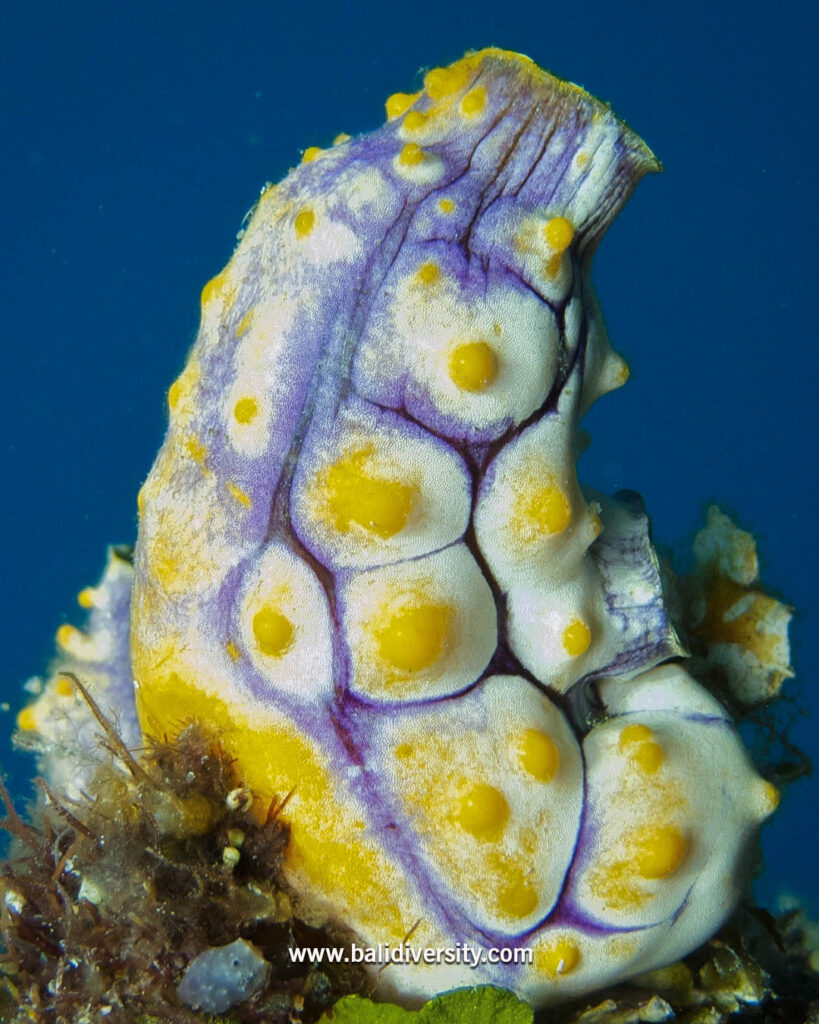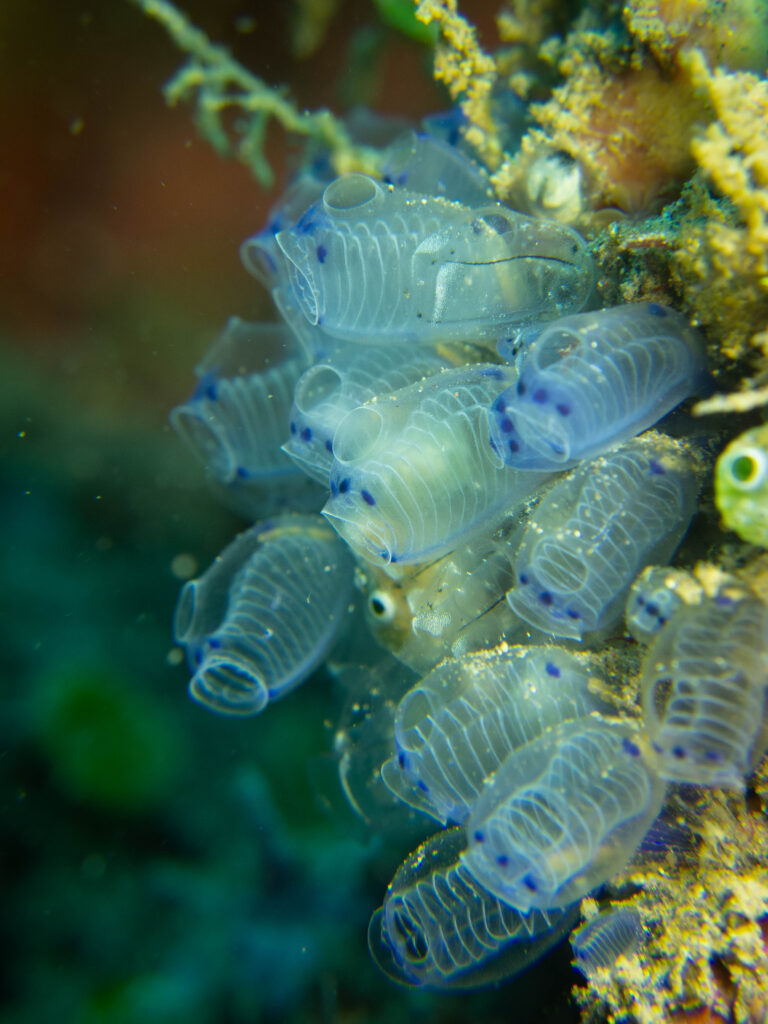Tunicates, also known as sea squirts, are among the ocean’s most unusual and misunderstood creatures. Though they might look like blobs or sponges, these marine invertebrates are surprisingly complex — and even closely related to us humans! Found all over the world, from shallow reefs to deep sea floors, tunicates offer a fascinating glimpse to us divers into both primitive and advanced forms of life.
Here are 10 fun facts to discover how these quirky creatures live, evolve, and impact the ocean world:
1. Tunicates are our cousins
Despite their simple appearance, tunicates are part of the phylum Chordata, meaning they’re more closely related to humans than most other invertebrates. In their larval stage, they even have a notochord, a precursor to a backbone!
2. They can be solitary or colonial
Some tunicates live alone (solitary), while others form colonies made up of thousands of individual zooids, all connected and sharing a common outer tissue. These colonies can grow into all kinds of shapes and colors.
3. Tunicates squirt when threatened
Nicknamed “sea squirts”, many tunicates squirt water forcefully from their siphons when disturbed. Please do not harass them even if fun to watch. You can safely witness it at low tide in rock pools.

4. They eat by filtering seawater
Tunicates are filter feeders: they suck in water through one siphon, filter out plankton and nutrients with a mucus net inside their bodies, then expel the clean water through the other siphon.
5. Some tunicates are transparent
Certain species of tunicates are see-through, which helps them blend into their environment and avoid predators. Their jelly-like bodies may look like glass floating in the ocean. The details of their inner bodies are fascinating to look at and photograph.

6. Tunicates are found everywhere in the ocean
From tidepools to deep trenches, tunicates live all over the world. Some species even attach themselves to ships, docks, and artificial reefs, making them marine fouling organisms.
7. They undergo an extreme transformation
Tunicate larvae look like tiny tadpoles and swim freely. But once they find a surface to attach to, they metamorphose, absorb their tail and brain, and become sessile adults. It’s one of the most dramatic changes in the animal kingdom!
8. Some are a threat to marine ecosystems
Invasive tunicate species, like the Didemnum vexillum, can overgrow native organisms and smother ecosystems. These species reproduce quickly and are hard to remove once they establish.
9. Tunicates are used in medical research
Certain tunicates produce bioactive compounds that are being researched for treatments against cancer and viral infections. Their unique chemicals may hold the key to new medicines.
10. Their poop supports the deep ocean
Tunicates produce dense fecal pellets that sink rapidly, transporting carbon to the ocean floor — a process that helps regulate the Earth’s carbon cycle and feed deep-sea creatures.
Whether you’re diving beneath coral reefs or studying them in a lab, tunicates remind us that even the simplest-looking creatures can hold complex secrets of evolution, ecology, and even medicine.
Reference for this article:
https://www.scubadiving.com/12-facts-you-didnt-know-about-tunicate
https://en.wikipedia.org/wiki/Tunicate
https://kids.kiddle.co/Tunicate
https://ocean.si.edu/ocean-life/invertebrates/tunicates-not-so-spineless-invertebrates
https://striresearch.si.edu/taxonomy-training/resources/fun-facts-about-tunicates/



